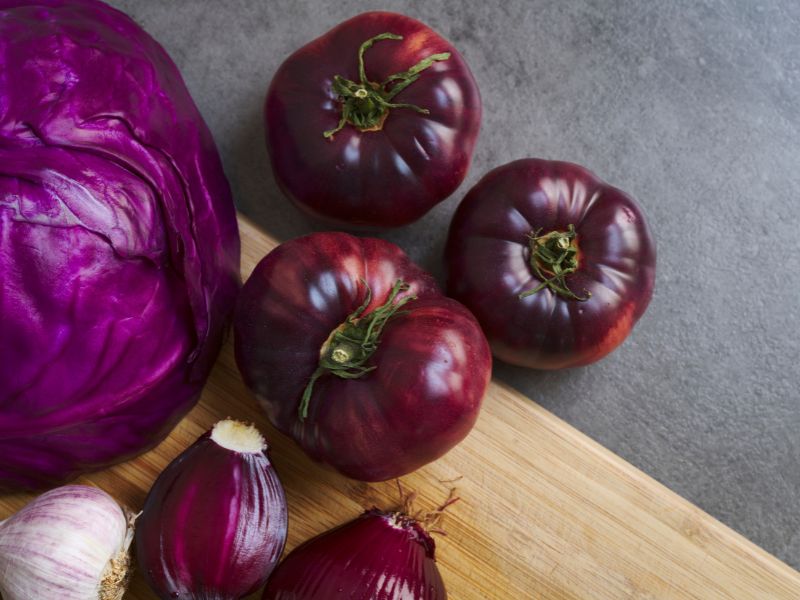Tomatoes have long been a staple in kitchens around the world. From vibrant reds to rich yellows, tomatoes come in various colors and flavors. However, a new trend is emerging in the tomato world – purple tomatoes. These unique fruits capture the attention of chefs, health enthusiasts, and foodies alike. But are purple tomatoes the next big veggie? Let’s explore.

Image Credit: Shutterstock/Dagomartinez
Unleashing The Power Of Antioxidants
One of the key reasons behind the buzz surrounding purple tomatoes is their high antioxidant content. The purple hue of these tomatoes comes from a pigment called anthocyanin, known for its powerful antioxidant properties. Antioxidants help combat free radicals in the body and may reduce the risk of chronic diseases such as heart disease and cancer. Purple tomatoes offer a tasty way to boost your antioxidant intake.
Enhanced Nutritional Profile
Purple tomatoes are not just eye-catching; they also pack a nutritional punch. They contain higher levels of certain nutrients compared to their red counterparts. For example, purple tomatoes tend to have more vitamin C, vitamin A, and potassium. These nutrients are essential in supporting immune function, promoting healthy vision, and maintaining electrolyte balance.

Image Credit: Shutterstock/Nattapolsritongcom
Versatility In Culinary Delights
Purple tomatoes aren’t just a visual delight; they can also elevate your culinary creations. Their unique flavor profile adds depth and complexity to dishes, making them a favorite among chefs. Whether incorporated into salads, salsas, or sauces, purple tomatoes bring a vibrant twist to traditional recipes. Their rich color can also make them a show-stopping ingredient in visually appealing dishes.
Experimental Breeding
The rise of purple tomatoes is not purely a natural occurrence. It is the result of years of research and experimental breeding. Scientists have been working on developing tomatoes with higher levels of antioxidants, aiming to create a healthier alternative to traditional tomatoes. This innovation showcases the potential for further advancements in food science.